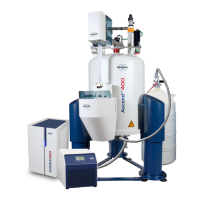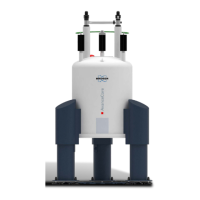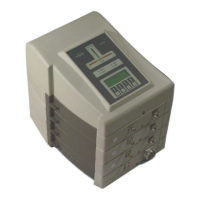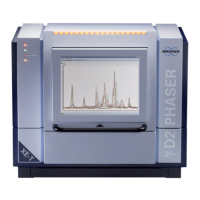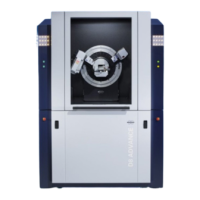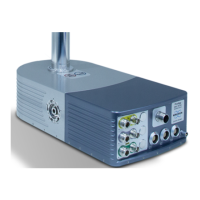CryoProbe Safety
H171764_6_001 33 / 48
6 CryoProbe Safety
BRUKER CryoProbes
TM
offer a dramatic increase in signal-to-noise ratio (S/N) by reducing
the operating temperature of the NMR coil assembly and the preamplifier. Their
spectroscopic handling is very similar to a conventional probe. While the sample temperature
is stabilized at a user-defined value around room temperature, the NMR coil assembly,
located a few millimeters from the sample, is cooled with cryogenic helium gas. An automatic
closed-cycle cooling system controls all functions and guarantees excellent stability during
short and long-term experiments.
A CryoProbe System consists of several subunits:
• CryoProbe,
• CryoPlatform,
• cryo-compatible HPPR, and
• He steel-cylinder.
The term CryoPlatform summarizes the parts required to operate a CryoProbe and includes
the CryoCooling Unit, the He Compressor, the mounting hardware at the magnet etc. It is
compatible with all BRUKER CryoProbes and only one per spectrometer is needed.
For additional CryoProbe safety and related information, refer to the CryoProbe System User
Manual (P/N Z31551), available on the BASH DVD or from Bruker.
As the CryoProbe system is used in conjunction with a magnet system, also refer to the
Magnet Safety [}21] chapter in this manual.
6.1 Emergency Shutoff
The rotary mains switch on the front of the CryoCooling Unit front serves as an
EMERGENCY OFF. It powers down the systems for cryogenic cooling, vacuum, sensors,
and helium gas compression. All valves are reset to their default positions. The CryoPreamps
inside the CryoProbe, however, are not affected by an EMERGENCY OFF because they are
controlled by the HPPR. If the system is kept OFF, it will slowly warm up due to thermal
conduction.
NOTE: Because an EMERGENCY OFF also shuts down the monitoring electronics, it should
only be used as a last resort.
